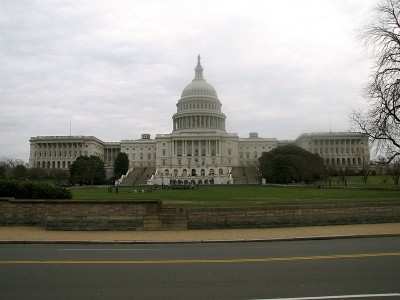Fri, Jul 15, 2011
AIA Concerned By NASA, NOAA Cuts In House Subcommittee Budget
Markup
As the debt-ceiling debate rages in Washington, the Aerospace
Industries Association is expressing concern about cuts being made
to the budgets of NASA and NOAA in the House Appropriations
Subcommittee on Commerce, Justice and Science markup of the fiscal
year 2012 appropriations bill. "We recognize that tough economic
times call for tough choices," said AIA President and CEO Marion C.
Blakey (pictured, below). "However, cutting NASA and NOAA this
deeply threatens American leadership in space and impairs our
ability to make life-saving weather predictions."

The subcommittee's markup cuts NASA's space programs by 10
percent from the President's request and nearly 13 percent from the
NASA authorization passed last October. AIA acknowledges that many
NASA mission areas were adequately supported—but says some
suffered draconian cuts. Given the current fiscal environment, AIA
says it believes the $18.7 billion in funding proposed by the
President provides the minimum required for these important
programs. AIA supports appropriations reflecting the policy
priorities of the NASA Authorization Act of 2010 as closely as
possible and opposes the termination of programs contrary to the
priorities of the Authorization Act.
With the last shuttle mission about to wrap up, Blakey says NASA
must be adequately funded to continue a visible national commitment
to space exploration, science, aeronautics and technology
leadership, and notes that 58 percent of Americans recently
polled by the Pew Research Center supported. "Each ride to the
space station that NASA buys from Russia is the annual equivalent
of 1000 American aerospace jobs," Blakey said. "We should be paying
Americans instead of Russians."

In addition, NOAA would get $1 billion less than the President's
request, an 18 percent cut. AIA says our public safety, national
security and economic recovery argues for fully funding NOAA to get
observing programs back on track and mitigate any loss in coverage
due to aging systems. "The health of our space programs has major
implications for the innovation economy, the national maintenance
of critical skill sets and fostering math and science education,"
Blakey said. "Supporting NASA and NOAA at stable and predictable
funding levels is crucial for mission success, impacting lives, the
economy and our nation's security."
More News
Pilot Applied Full Aft Stick And Nose-Up Trim, But The Airplane Remained On The Runway Analysis: The pilot reported that a preflight inspection and flight control checks revealed n>[...]
A Few Questions AND Answers To Help You Get MORE Out of ANN! 1) I forgot my password. How do I find it? 1) Easy... click here and give us your e-mail address--we'll send it to you >[...]
From 2022 (YouTube Edition): Before They’re All Gone... Humankind has been messing about in airplanes for almost 120-years. In that time, thousands of aircraft representing i>[...]
Advanced Air Mobility (AAM) A transportation system that transports people and property by air between two points in the NAS using aircraft with advanced technologies, including el>[...]
Aero Linx: MQ-1B Predator The MQ-1B Predator is an armed, multi-mission, medium-altitude, long-endurance remotely piloted aircraft that is employed primarily as an intelligence-col>[...]
 NTSB Final Report: Douglas A-4K
NTSB Final Report: Douglas A-4K ANN FAQ: Q&A 101
ANN FAQ: Q&A 101 Classic Aero-TV: PBY Catalina--From Wartime to Double Sunrise to the Long Sunset
Classic Aero-TV: PBY Catalina--From Wartime to Double Sunrise to the Long Sunset ANN's Daily Aero-Term (07.01.25): Advanced Air Mobility (AAM)
ANN's Daily Aero-Term (07.01.25): Advanced Air Mobility (AAM) ANN's Daily Aero-Linx (07.01.25)
ANN's Daily Aero-Linx (07.01.25)




